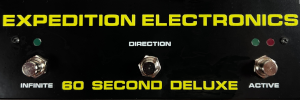Showing posts sorted by date for query pitch patch. Sort by relevance Show all posts
Showing posts sorted by date for query pitch patch. Sort by relevance Show all posts
Friday, December 19, 2025
Novation Mininova Ambient with loop station
video upload by Blossom Bisquits
"The Novation MiniNova is a powerful, compact synthesizer known for its surprisingly deep sound engine—the same one found in the larger UltraNova. It is particularly famous for its vocal processing and "Animate" performance buttons.
Here is a breakdown of its key features in English:
Core Sound Engine
Powerful Synth Engine: A versatile engine capable of up to 18-note polyphony and 5 effects per patch.
Oscillators: Features 3 oscillators per voice, including classic analog waveforms, 36 wavetables, and 20 digital waveforms.
Filters: 14 different filter types, including low-pass, high-pass, and band-pass, with various slope settings.
Modulation: 20 modulation slots to link synth modules together, plus 3 LFOs and 6 envelope generators.
Vocal Processing (VocalTune & Vocoder)
VocalTune: Includes a built-in pitch correction effect to achieve that "auto-tuned" vocal sound.
12-band Vocoder: Comes with a dedicated gooseneck microphone to create classic robotic voice effects.
Voice Processor: You can also run external instruments through its filters and effects via the audio input.
Performance Controls
Animate Buttons: 8 backlit "Animate" buttons that allow you to "warp" and trigger modulation in real-time.
Pitch & Mod Wheels: Tactile wheels for expressive playing.
Large Filter Knob: A dedicated, oversized cutoff knob for instant sonic control.
Arpeggiator: A built-in 33-pattern arpeggiator with real-time editing.
Hardware & Connectivity
Mini-Keys: 37 velocity-sensitive mini-keys for a compact footprint.
Patch Storage: Space for 384 onboard patches (256 factory sounds included) and additional storage via computer software.
I/O Ports: * 1/4" Jack output (Stereo)
1/4" Mono input (to process external gear)
Headphone output
MIDI In/Out
USB port (for MIDI and patch management)
XLR input (for the gooseneck mic)"
Thursday, December 18, 2025
Yamaha VSS 200 Sampling Keyboard + Patch Bay Demo
Note: links to listings are affiliate links for which the site may be compensated.
via this Reverb listing
Demo in the listing previously posted here.
 "Rare stereo keyboard which combines 100 2-op FM preset sounds, 10 rhythms and an 8-bit sampling function incorporating a four stage envelope generator and 9 adjustable DSP effects.
"Rare stereo keyboard which combines 100 2-op FM preset sounds, 10 rhythms and an 8-bit sampling function incorporating a four stage envelope generator and 9 adjustable DSP effects.
This unit has been custom modified to include a 14 point patch bay (five stackable patch cables included) which allows for the further processing of any sample recorded via the onboard microphone or phono input. The patch matrix generates an array of effects including aliasing, bit crushing, stuttering, bleeping and warped digital degradation, offering numerous unique lo-fi sound design possibilities. See the chapters in the YouTube video description for more details.
-49 half sized keys.
-Six voice polyphony (depending on the mode used)
-100 FM generated presets.
-10 rhythm patterns: 8 Beat, 16 Beat, Rock-A-Ballad, Samba, Bossa Nova, Tango, Swing, Disco, Waltz, March with fill button.
-Sample bit depth: 8 Bit.
-Sample length: 1.9 seconds, 16 kHz- with the option for double tracking.
-Sampling modes: Microphone/Sample Input, Internal voice bank, Overdub.
-9 DSP effects: Loop, U-Turn, Reverse, Echo, Fuzz, FM, AM, Level, Pitch with adjustable levels. Can be tweaked in real time.
-ADSR for amplitude.
-Power source: 9VDC by six "C" size batteries or external power supply.
-Output Ports: 6.35mm Headphone/Aux socket.
-Input Port: Sample In (RCA)."
via this Reverb listing
Demo in the listing previously posted here.
 "Rare stereo keyboard which combines 100 2-op FM preset sounds, 10 rhythms and an 8-bit sampling function incorporating a four stage envelope generator and 9 adjustable DSP effects.
"Rare stereo keyboard which combines 100 2-op FM preset sounds, 10 rhythms and an 8-bit sampling function incorporating a four stage envelope generator and 9 adjustable DSP effects.This unit has been custom modified to include a 14 point patch bay (five stackable patch cables included) which allows for the further processing of any sample recorded via the onboard microphone or phono input. The patch matrix generates an array of effects including aliasing, bit crushing, stuttering, bleeping and warped digital degradation, offering numerous unique lo-fi sound design possibilities. See the chapters in the YouTube video description for more details.
-49 half sized keys.
-Six voice polyphony (depending on the mode used)
-100 FM generated presets.
-10 rhythm patterns: 8 Beat, 16 Beat, Rock-A-Ballad, Samba, Bossa Nova, Tango, Swing, Disco, Waltz, March with fill button.
-Sample bit depth: 8 Bit.
-Sample length: 1.9 seconds, 16 kHz- with the option for double tracking.
-Sampling modes: Microphone/Sample Input, Internal voice bank, Overdub.
-9 DSP effects: Loop, U-Turn, Reverse, Echo, Fuzz, FM, AM, Level, Pitch with adjustable levels. Can be tweaked in real time.
-ADSR for amplitude.
-Power source: 9VDC by six "C" size batteries or external power supply.
-Output Ports: 6.35mm Headphone/Aux socket.
-Input Port: Sample In (RCA)."
Monday, December 15, 2025
PATCH / STEREO 4 VOICE GENERATIVE CHORDS / Joranalogue Audio Design system
video upload by Joranalogue Audio Design
"'I had a blast creating this patch on a giant Joranalogue eurorack system. I implemented a lot of small tricks, let me write out the main ones down here...'—Simon
Kickdrum
---------------
Filter 8 is getting pinged by a clock pulse (generated with a looping Contour 1), routed through Warp 1. A second Contour 1 is used to modulate the frequency of Filter 8. A Step 8 being clocked with the same pulse from Contour 1 is modulating the exponent parameter on Warp 1 (controlling the amount of distortion/waveshaping). The pattern is 7 steps long. By adjusting the exp knob manually I have additional control over the distortion.
Saturday, December 13, 2025
Analogue Solutions Ample Desktop Monophonic Synthesizer
Note: links to listings are affiliate links for which the site may be compensated.
via this Reverb listing
 "Mint condition...... And heck if a lot of fun and sounds awesome.
"Mint condition...... And heck if a lot of fun and sounds awesome.
comes with all accessories (matrix pins/cables/power)
In perfect condition, everything works like it should. 2 to3 day shipping...
Ample combines the best elements of several of our recent products.
The sound elements of Fusebox
Jack patch points of Concussor Eurorack
Patch pin matrix of Vostok
Echo from Dr Strangelove
Sequencer and CV touch pads of Generator
It shares all this yet still has its own sound!"
Ample can be as complex or as simple as you want it to be
We have given this synth a large and diverse number of controls, that along side the patch sockets, will give even the best and experienced synthesist endless possibilities.
We have presented the controls in a user friendly and familiar synth layout that, together with this manual and other resources, enable even the new guy to get great sounds.
SYNTH – PERCUSSION – AUDIO PROCESSOR
Ample is a compact analogue synthesizer. Analogue - as in really analogue. Aside from the MIDI chip (which has to be digital), everything else is totally analogue using real transistors and op-amps. There are no CPU stabilised and quantised circuits, no DCOs, no digital LFOs and no digital EGs, as found on other so called analogue synths. The circuitry is based on designs dating back to the mid-1970s. So Ample has a genuine old sound.
via this Reverb listing
 "Mint condition...... And heck if a lot of fun and sounds awesome.
"Mint condition...... And heck if a lot of fun and sounds awesome.
comes with all accessories (matrix pins/cables/power)
In perfect condition, everything works like it should. 2 to3 day shipping...
Ample combines the best elements of several of our recent products.
The sound elements of Fusebox
Jack patch points of Concussor Eurorack
Patch pin matrix of Vostok
Echo from Dr Strangelove
Sequencer and CV touch pads of Generator
It shares all this yet still has its own sound!"
Ample can be as complex or as simple as you want it to be
We have given this synth a large and diverse number of controls, that along side the patch sockets, will give even the best and experienced synthesist endless possibilities.
We have presented the controls in a user friendly and familiar synth layout that, together with this manual and other resources, enable even the new guy to get great sounds.
SYNTH – PERCUSSION – AUDIO PROCESSOR
Ample is a compact analogue synthesizer. Analogue - as in really analogue. Aside from the MIDI chip (which has to be digital), everything else is totally analogue using real transistors and op-amps. There are no CPU stabilised and quantised circuits, no DCOs, no digital LFOs and no digital EGs, as found on other so called analogue synths. The circuitry is based on designs dating back to the mid-1970s. So Ample has a genuine old sound.
Friday, December 12, 2025
Turismo - Iterative Drone Composition
video upload by ALM TV
"Our Eurorack modular workstation the 'Turismo' is well suited for sequencing beats and groove box style patching but the versatile system can fit equally well into less structured environments. In this patch we explored using the Turismo for iterative drone composition, making use of the system's stereo line input and output and flexible set of modules to generate, record and reprocess sound in combination with a 4 track cassette recorder.
Check with dealers on the right for availability.
Additional details via ALM:


Our Eurorack modular workstation the 'Turismo' is well suited for sequencing beats and groove box style patching but the versatile system can fit equally well into less structured environments.
In this patch we explored using the Turismo for iterative drone composition, making use of the system's stereo line input and output and flexible set of modules to generate, record and reprocess sound in combination with a 4 track cassette recorder.
To start we connected the line out of the Turismo to the first 2 tracks of the 4 track, to capture our patch. We inserted a cassette tape and began recording a prepatched droning ambient soundscape to tape. The patch took full advantage of the system's collection of modules to generate and process the sound. Over the course of recording, we made some tweaks to the patch to subtly evolve our sounds. After a few minutes of recording we faded the sounds out and stopped the tape.
Reprocessing
Next we reset the system and rewound our tape, then repatched the output of the 4 track directly to the stereo line input of the MEGA MILTON utility module so we could reprocess our original patch back through the Turismo in a unique iterative compositional process.
We connected the amplified left and right outputs of the MEGA MILTON directly to channels 1 and 2 of the MEGA-TANG mixer and VCA, increasing their levels and hard panning them left and right. We set the tape to play at half speed, then began playback. The full system was then available to process the recording.
We connected the FX send of the MEGA-TANG to the record input of the Squid Salmple and returned the output for channel 6 back to the MEGA-TANG. Outside of conventional sample playback, the flexible Squid Salmple can be used like a live processor similar to a delay. To set this up, we started by creating a record buffer. We entered the record menu and locked recording to channel 1 by holding the Chan button and pressing the Rec button. We also set the record mode to 'overdub' for a smoother sound. Next we connected a x1 clock output from Pamela's PRO Workout to the record gate input to continuously trigger recording.
Thursday, December 11, 2025
Introducing Granulita Versio: Granular chord resynthesizer and shimmer reverb
video upload by Noise Engineering
"Meet Noise Engineering’s chord machine, Granulita Versio.
LIMITED QUANTITIES AVAILABLE: Get your Granulita here: https://noiseengineering.us/products/...
This granular chord resynthesizer takes your audio, slices it into grains, and reconstructs it into chords, clusters, and shifting harmonies. Paired with a shimmering reverb that adds glowing tails and angelic overtones, Granulita can turn even a single oscillator into something lush, cinematic, or beautifully haunted.
Granulita is part of the Versio platform, so once you’ve got your hands on this module, you can swap the firmware with any other Versio effect for free. Unpower the module, plug in the USB, and visit noiseengineering.us to make the swap.
Join us on Discord! Invite link: / discord"
Press release follows:
Noise Engineering announces Granulita Versio, a granular chord resynthesizer and shimmering reverb.
Contact: kris@noiseengineering.us
Los Angeles, CA — Noise Engineering, known for their innovative platform modules, has released Granulita Versio, a granular chord resynthesizer and shimmering reverb.
Granulita Versio offers a simple solution to a complex modular problem. Chords, while beautiful, are difficult and resource-heavy to patch in a Eurorack system. Granulita solves this by generating harmonies for any input signal using a unique granular process. The Chord and Voice parameters allow the user to choose a chord and the note that follows the input signal.
The unquantized Pitch parameter adds an extra layer of harmonic options via transposition, detuning or vibrato.
For fans of granular processing, the Count and Length parameters will be familiar, Granulita can generate any number of grains from zero to 32, and grains can be 16 milliseconds to four seconds long. A modal trigger input and manual button add to the granular fun: freeze grains, sync their playback to an external clock or tap tempo, or use a trigger sequence to manually fire off grain playback.
No granular module would be complete without some atmospheric effects, so Granulita also adds the simple Verb parameter to add in some space. Below noon, small echoes put a patch in a realistic space – but turn up the parameter to add in shimmering octave overtones and feedback into infinity.
Part of the flexible Versio platform, Granulita will be available as an alternate firmware for all Versio owners, completely free, at the Noise Engineering firmware app. However, Granulita breaks the mold with a limited-edition hardware release: only 100 Granulita Versios with exclusive art will be produced, the perfect purchase for collectors or, perhaps, as a holiday gift for the granular enthusiast in your life.
Granulita Versio’s limited run starts December 11th at https://noiseengineering.us and at retailers globally.
Features
● Turn a monophonic signal into a full chord with ease
● Easily create gentle or ominous timbres from any input
● Modulate between 16 resynthesized chord shapes using the CV-controllable Chord and Voice parameters
● Use Count and Length to change the number and size of grains
● Add subtle atmosphere or shimmering, infinite reverb with the Verb parameter
● Create massive soundscapes or use external triggers to fire or freeze grains
● Play grains forwards, backwards, or in random directions
Availability and pricing:
Granulita Versio: Limited run in stock. Shipping from Noise Engineering and retailers starting December 11th, 2025; MSRP US$393
https://noiseengineering.us/products/granulita-versio/
Also check with dealers on the right.
Update: and a user video by Metamyther:
The Glorious Granulita Versio
video upload by Metamyther
Chapters:
00:00 - Jam 1
02:33 - Jam 2
05:54 - Jam 3
Wednesday, December 10, 2025
Introducing Soft Memo by Herbs and Stones
video upload by Herbs and Stones
"Soft Memo is a stereo hybrid multi effects desktop unit.
Eight digital CV controlled FX programs, two analog feedback paths, two complex VCLFOs."
Soft Memo - Eight programs overview
video upload by Herbs and Stones
"Dry / wet comparison of a drum loop treatment by Soft Memo
00:00 Twin Gorge - dual drifting delay
00:25 Faux Mirrors - lo-fi reverse time processor
00:50 Empty Shell - shimmering feedback delay
01:16 Fixed Thoughts - double pitched freeze reverb
01:41 Grotto Divide - stereo crossfade reverb
02:05 Rival Choir - freeform stereo chorus
02:29 Mood Swings - drifting stereo pitch shifter
02:54 Late Rings - dual ring modulator w/ tempo offset
https://herbs---stones.com/soft-memo/"
Soft Memo is a hybrid stereo multi effects desktop unit with eight digital CV controlled FX programs, two analogue feedback paths and two complex voltage-controlled LFOs.
 It has patch points to integrate external synthesisers and sequencers and it is designed to creatively reshape your sounds with a menu-free hands-on approach.
It has patch points to integrate external synthesisers and sequencers and it is designed to creatively reshape your sounds with a menu-free hands-on approach.
You can create patches by connecting inputs and outputs with eurorack-standard 1/8" jacks.
All its inputs are protected from potentially dangerous voltages.
It generates (and reacts to) control voltages in the 0-5V range: when a CV signal is patched into an input, its knob becomes an attenuator for the incoming signal.
The patch points are visually divided between inputs and outputs: the inputs are placed in the middle of a white circle while the outputs are not.
Soft Memo is powered by a 9V center-negative (500 mA) power supply, the standard PSU used with most guitar pedals.
Features:
Eight FX programs
A total of 25 patch points
Two high gain preamps
Two feedback paths made of analog VCAs and resonant analog VCFs
Two complex voltage controlled LFOs with clock division and phase offset control
An envelope follower
A→B buttons to set how the two channels controls interact with each other"
Tuesday, December 02, 2025
Café Quantum
video upload by Patch Point
"By Ciat-Lonbarde"


"When the Cocoquantus2 first appeared, it didn’t just find an audience—it created one. Musicians, experimentalists, producers, and curious tinkerers fell in love with its organic chaos, character, and uncanny ability to turn accidents into art. It became a modern cult instrument because you couldn’t play it without forming a relationship with it.
Café Quantum continues that lineage with reverence—then boldly invents a new chapter.
At its core, Café Quantum preserves the tactile immediacy and playful unpredictability of the Coco ecosystem. But surrounding that familiar heart are entirely new tools designed to make the instrument feel more alive, more intelligent, and more expressive.
One of the biggest leaps is the open-source programmable engine. For the first time, players can write their own behaviors—little sonic personalities— at the Cafe modules, one for each side, and the Quantum module can carry them out by patching points. Whether it’s generative patches, evolving modulation, rhythmic structures, or strange autonomous rituals, the instrument becomes a creative partner. And thanks to the dedicated banana sockets, these behaviors integrate directly into the patch ecosystem. The Cafe module becomes a blank page for your imagination, shaped as far as your coding skills can carry you
The preamp has grown up too. Now it features a Norton gain character and adds a VCA input, making external dynamics, sidechaining, and voltage-controlled level manipulation feel effortless. On top of the newly redesigned preamp features you still have the envelope follower that opens the door to all sorts of expressive interactions between incoming audio and internal modulation.
Then comes the new magic trick:
A radio-based gestural controller sits atop the entire system, allowing 4 hands-free modulation reminiscent of a theremin. Move in space, and the instrument responds—pitch, delay time, grain density, feedback paths, whatever you choose. It transforms performance from knob-twisting to full-body expression."
Monday, December 01, 2025
Roland Juno-106 61-Key Programmable Polyphonic Synthesizer w/ New Voice Chips
Note: links to listings are affiliate links for which the site may be compensated.
via this Reverb listing
 "The Juno-106 synthesizer was Roland’s successor to the Juno-60 and was first released in 1984. It was one of Roland’s first synthesizers to include MIDI and the patch memory was expanded to 128 patches over the 56 available on the Juno-60.
"The Juno-106 synthesizer was Roland’s successor to the Juno-60 and was first released in 1984. It was one of Roland’s first synthesizers to include MIDI and the patch memory was expanded to 128 patches over the 56 available on the Juno-60.
The synth is polyphonic with 6 voices and 1 digital controlled oscillator per voice. It has a chorus effect to fatten up the sound and by pressing both the Poly 1 and 2 switches at the same time, the synth can be played in monophonic unison mode with all 6 voices playing on every key pressed. It has a non-resonant high pass filter and a resonant low-pass filter.
It’s easy to program and remains a popular synth to this day.
This unit was fully serviced in Oct 2021 at Bell Tone Synth Works and at that time, all 6 voice chips were replaced with Analogue Renaissance voice chips. In addition, they performed the following services:
Replace 3 electrolytic smoothing capacitors in power supply, reflow solder on power transistors/regulators, adjust power supply rail voltages
Re-solder output board jacks, cleaned output level switch and tuning pot.
Clean volume pot, portamento pot and pitch bend pot.
Replace old soldered-in patch memory battery with new battery in battery holder for easy replacement in the future; reload sounds.
Calibrate all parameters to Roland specs.
Replace 2-prong Japanese power cable connector with standard 3-prong IEC C14
Replace all panel button tact switches, clean all sliders, replace crumbly slider dust gaskets with new ones.
Replaced (2) MN3009 BBD IC's in Chorus circuit with new Xvive MN3009s to reduce noisy wooshing
Repaired and re-centered bender pot by resoldering the wiring and re-aligning to get the bender working correctly."
via this Reverb listing
 "The Juno-106 synthesizer was Roland’s successor to the Juno-60 and was first released in 1984. It was one of Roland’s first synthesizers to include MIDI and the patch memory was expanded to 128 patches over the 56 available on the Juno-60.
"The Juno-106 synthesizer was Roland’s successor to the Juno-60 and was first released in 1984. It was one of Roland’s first synthesizers to include MIDI and the patch memory was expanded to 128 patches over the 56 available on the Juno-60.The synth is polyphonic with 6 voices and 1 digital controlled oscillator per voice. It has a chorus effect to fatten up the sound and by pressing both the Poly 1 and 2 switches at the same time, the synth can be played in monophonic unison mode with all 6 voices playing on every key pressed. It has a non-resonant high pass filter and a resonant low-pass filter.
It’s easy to program and remains a popular synth to this day.
This unit was fully serviced in Oct 2021 at Bell Tone Synth Works and at that time, all 6 voice chips were replaced with Analogue Renaissance voice chips. In addition, they performed the following services:
Replace 3 electrolytic smoothing capacitors in power supply, reflow solder on power transistors/regulators, adjust power supply rail voltages
Re-solder output board jacks, cleaned output level switch and tuning pot.
Clean volume pot, portamento pot and pitch bend pot.
Replace old soldered-in patch memory battery with new battery in battery holder for easy replacement in the future; reload sounds.
Calibrate all parameters to Roland specs.
Replace 2-prong Japanese power cable connector with standard 3-prong IEC C14
Replace all panel button tact switches, clean all sliders, replace crumbly slider dust gaskets with new ones.
Replaced (2) MN3009 BBD IC's in Chorus circuit with new Xvive MN3009s to reduce noisy wooshing
Repaired and re-centered bender pot by resoldering the wiring and re-aligning to get the bender working correctly."
Wednesday, November 26, 2025
Five12 QVL Firmware v2 Preview
video upload by Five12 Inc.
"Four big new features for the QV-L: Revised, much-improved UI navigation, reversed UI pref, ADSR envelopes and Log-taper envelopes. Download at https://www.five12.com/hq/Support"
QV-L Generative Improv : Space Invaders
video upload by Five12 Inc.
"A patch using the QV-L to generate Pitch, EG and modulation for an Oscillator, Filter and VCA, with a generous helping of delay."
http://www.five12.com
Tuesday, November 25, 2025
Voltage Multistage 16 - Control Center
video upload by Verbos Electronics GmbH
"In this patch, we utilize all the outputs of the Voltage Multistage 16 to generate envelopes, pitch CV and Harmonic Oscillator motion. Controlling the entire patch from the Voltage Multistage 16."
Monday, November 24, 2025
WMD CLUTCH - Hi Hat Percussion Eurorack Module - In Depth Overview
video upload by WMDevices
As always, check with dealers on the right for pricing and availability.
"The long-awaited Clutch module is a dual sample player built specifically for creating dynamic, expressive hi-hat sounds through an immediately playable interface.
With two layers of samples, Clutch lets you blend dependable “bread-and-butter” built in hits with a massive library of sample pairs hosted on a memory card. The controls for the card based samples are always accessible and intuitively arranged, making it easy to dial in sounds quickly during performance or patching. And yes, you can load your own samples!
In this video, Alex goes through the module from top to bottom, demoing all of the controls and features Clutch has to offer. Starting with the connections, and ending with a jam using CV modulation, the built-in FX, and feel control to create a super unique groove in a matter of minutes. Clutch is a tool for creating the best quality and unique hihat and auxilliary percussion to your modular jams in a fun and intuitive way.
Chapters:
00:00 - Intro
00:10 - Quick overview
01:10 - Trigger inputs, mono output
03:20 - Surface A banks walk-through
06:24 - Pitch A
06:40 - Release
06:57 - A/B Blend
07:14 - Assignable knobs
10:30 - Effects Mode
14:00 - Feel Control
15:30 - CV Control / Jam Time
WMD designs electronic hardware for musicians longing for a balance of precision and exploration. Our quality control is the absolute finest, with service to match."
Update:
Performable, musical & “produced” sounding modular hi hats // CLUTCH from WMD
video upload by DivKid
"Here we have the eagerly anticipated CLUTCH from WMD. It's a dual layer, closed and open hi hat module based around the playback of samples. With 'samples' said ... you can swap them and turn this into a percussive sample player for non hi hats too - which we do in the video. There's built in FX, seriously impressive 'feel' and dynamics controls that are incredibly musical incredibly easily and a whole host of features to layer sounds, sit them in a mix and to perform with them."
Timestamps:
00:00 Hello & previews
01:35 What is Clutch?
02:43 Detailed feature run
Sunday, November 23, 2025
Montage M8X FM-X walkthrough: Patch from scratch tutorial on Yamaha's latest FM synthesizer
video upload by Floyd Steinberg
"FM-X is the FM synthesis engine found in the Yamaha MODX and Montage Series. With 8 operators per voice and 128 voice polyphony, this is a very capable sound generator. In this video, I create a "Piano with pads and sparkles" sound, explaining which options do what in the process. This is not a complete overview, just the process of making one particular patch and explaining every step.
Table of contents:
00:00 introduction, overview and terminology
00:55 selecting the FM-X engine and opening the editor
01:24 selecting an algorithm
02:15 quick editor, and explaining the algorithm
02:46 operator envelopes
03:43 velocity sensitivity
04:05 setting up the first modulator: ratio, level, envelope and velocity
05:30 second carrier and modulator: tuning
07:22 building the pad: distorting the waveshape with the spectral option
08:14 skirt value (oscilloscope view)
09:00 tuning/detuning and browsing some more spectral options (including resonance)
10:17 adding another operator and modulator
11:15 putting it all together / fine adjustments
11:37 adding LFOs for pitch and amp modulation
14:03 adding a "sparkle" with modulator 3
16:46 filter type, LFOs and envelopes
18:29 FM color
19:16 effects: insert and global
20:24 physical controls (mod wheel and poly aftertouch)
21:33 the result - a new age pad with some alien weirdness
22:55 conclusion - do the youtube thing! :-)
HÄLP ZIS CHANNEL
https://www.patreon.com/floyd_steinberg
https://floydsteinberg.gumroad.com/
https://floydsteinberg.bandcamp.com/"
Thursday, November 20, 2025
Eurorack Audio & CV Sampling that's Powerful but Simple to use! // VENO ORBIT from Venus Instruments
video upload by DivKid
Check with dealers on the right for availability. Pics and additional details below.
"Fantastically fun, feature packed, powerful yet simple to use Venus Instruments have brought a tonne of flexibility to Eurorack sampling and looping with the VENO ORBIT.
There's multiple bonus patch from scratch uncut videos exclusive to / divkid supporters - head there to join the community and gain access."
Thursday, November 13, 2025
Yamaha RX 17 + Patch Bay, Pitch Control and Joystick Mods
Note: links to listings are affiliate links for which the site may be compensated.
via this Reverb listing
Video in the listing for another mod previously posted here. "One-of-a-kind modified Yamaha RX 17 1987 12-bit programmable drum machine featuring two ROM modulation patch bays, a joystick for performance control of four pre-set effects (which may also be combined on the diagonal axes) and pitch control. These modifications generate an array of bit crushed, flanging, glitching, distorted, delayed, tonal effects, flams and digital noise. Five patch cables included- these can be 'stacked' for even deeper audio manipulation. The unit functions as normal when the patch bay is not in use. Only one available.
"One-of-a-kind modified Yamaha RX 17 1987 12-bit programmable drum machine featuring two ROM modulation patch bays, a joystick for performance control of four pre-set effects (which may also be combined on the diagonal axes) and pitch control. These modifications generate an array of bit crushed, flanging, glitching, distorted, delayed, tonal effects, flams and digital noise. Five patch cables included- these can be 'stacked' for even deeper audio manipulation. The unit functions as normal when the patch bay is not in use. Only one available.
13 pads: tom 1/conga 1, tom 2/ conga 2, hi hat open/bongo high, ride/agogo high, cowbell/whistle, timbale high/ cuica high, bass drum/ tambourine, snare/rim shot, tom 3/conga low, hi hat closed/ bongo low, crash/agogo low, clap/shaker, timbale low/cuica low.
Accent, level, pan for each sound.
User Patterns: 999.
User Songs: 10.
Tempo Range: 40 - 240 BPM.
MIDI in/ out.
ROM Size: 26 PCM waveforms at 12-bit resolution.
Screen: 16x2 character display.
Weight: 1.5 kg."
via this Reverb listing
Video in the listing for another mod previously posted here.
 "One-of-a-kind modified Yamaha RX 17 1987 12-bit programmable drum machine featuring two ROM modulation patch bays, a joystick for performance control of four pre-set effects (which may also be combined on the diagonal axes) and pitch control. These modifications generate an array of bit crushed, flanging, glitching, distorted, delayed, tonal effects, flams and digital noise. Five patch cables included- these can be 'stacked' for even deeper audio manipulation. The unit functions as normal when the patch bay is not in use. Only one available.
"One-of-a-kind modified Yamaha RX 17 1987 12-bit programmable drum machine featuring two ROM modulation patch bays, a joystick for performance control of four pre-set effects (which may also be combined on the diagonal axes) and pitch control. These modifications generate an array of bit crushed, flanging, glitching, distorted, delayed, tonal effects, flams and digital noise. Five patch cables included- these can be 'stacked' for even deeper audio manipulation. The unit functions as normal when the patch bay is not in use. Only one available.
13 pads: tom 1/conga 1, tom 2/ conga 2, hi hat open/bongo high, ride/agogo high, cowbell/whistle, timbale high/ cuica high, bass drum/ tambourine, snare/rim shot, tom 3/conga low, hi hat closed/ bongo low, crash/agogo low, clap/shaker, timbale low/cuica low.
Accent, level, pan for each sound.
User Patterns: 999.
User Songs: 10.
Tempo Range: 40 - 240 BPM.
MIDI in/ out.
ROM Size: 26 PCM waveforms at 12-bit resolution.
Screen: 16x2 character display.
Weight: 1.5 kg."
How to use S&H, comparators and rectifiers, feat. Worng Electronics Quiver
video upload by Tom Churchill
"This video is all about cool things you can do with some basic utilities in a modular synth. In particular, I want to explain how you can massively expand the sonic range of a basic oscillator with a few simple tricks. I’ll show you a couple of ways to use sample & hold, both at audio rates and for more subtle ‘humanising’ modulation. I’ll explore using a rectifier to create octave-up copies of simple shapes and to transform basic waveforms in more radical ways. I’ll go into extreme PWM territory with a comparator, as well as using it for some pitch-dependent switching to spice up sequences. And I’ll show you how you can use analogue logic processing to turn a mono oscillator into a stereo one."
Chapters:
00:00 Intro & patch previews
02:59 Downsamling audio with S&H
06:01 S&H for subtle random modulation
09:00 Octave doubling with a rectifier
13:17 Rectifier as an extreme waveshaper
17:30 Enhanced PWM with a comparator
21:18 Comparator as a switch controller
23:38 Analogue logic as a stereo-iser
Wednesday, November 12, 2025
VoxModula TipTop Buchla Demos
video uploads by VoxModula Archives
Playlist:
1. Polyrhythmic Motion – TipTop Audio Buchla 245t / 281t
A 4-minute modular improvisation exploring the interaction between The Tiptop Audio Buchla 245t and the 281t — where sequential voltage triggers envelopes, generating evolving polyrhythms and shifting patterns.2. Tiptop Buchla + Strymon El Capistan Live Modular Loop Performance / VoxModula #02
Recorded live, no overdubs, no post-processing.
Modules used:
• TipTop Audio Buchla 245t Sequential Voltage Source
• TipTop Audio Buchla 281t Quad Function Generator
• TipTop Audio Buchla 258t Dul Oscillator
Part of VoxModula Archives — a growing collection of modular sound fragments and explorations.
🎧 Best experienced on headphones.
A live modular improvisation exploring the Strymon El Capistan as a looping delay.3. Exploring FM Synthesis on Tiptop Buchla 258t + 259t | Live Patch Talk
The sound slowly folds into itself — echoes become layers, layers become memory.
Recorded in one take.
No editing, no overdubs.
In this video I explore FM synthesis on the Tiptop Buchla 258t and 259t, using the 245t sequencer to modulate pitch and rhythm, and the 266t for random voltages. It’s a liAnd two featuring Moog for good measure:
ve patch talk — I build the sound and explain what happens in real time, fit's my first video like, hopefully you will like it.
Let me know if you would be interested in more videos like this.
If you want the audio files and detailed photos of the patch please reach out and I can send them to you.
🎛️ Modules used:
• Tiptop Buchla 258t Dual Oscillator
• Tiptop Buchla 259t Complex Oscillator
• Tiptop Buchla 245t Sequential Voltage Source
• Tiptop Buchla 266t Source of Uncertainty
🎧 Patch focus: FM synthesis, modulation routing, random CV and sequence interaction.
Playlist:
1. Short Ambient Moog Grandmother Performance (40s Demo)
A short ambient performance using the Moog Grandmother, exploring smooth analog tones, slow modulation, and spatial delay textures.2. VoxModula Archives – The Beginning of an Archive
Recorded live in one take — with external effects, Zoom Ms-70 CDR, Grandmother’s raw sound shaped into a soft, floating atmosphere.
🎛️ Gear used:
• Moog Grandmother (analog synth)
• Internal spring reverb & Zoom Ms70 CDR delay
Hi, this is the first video of VoxModula Archives. VoxModula is an ongoing collection of sonic fragments — recordings where synthesis meets the quiet presence of the surrounding world.
Each piece is an observation of sound as a living material: unstable, imperfect, shaped by voltage and time.
The project does not aim to perform or entertain, but to document the space between intention and accident — where tone becomes memory, and noise becomes evidence of existence.
These works are presented without manipulation or spectacle, as if retrieved from an open archive of moments.
Nothing here is fixed.
Everything breathes.
Tuesday, November 11, 2025
POLYPATCH with POLYDATA - Episode 3
video upload by Polydata
"A new episode where we build a patch together. This time it's a patch that features the LFO modulating the pitch of the oscillators by a perfect 5th.
Polydata Store
polydata.bigcartel.com
Polydata Music
polydata.bandcamp.com"
Sunday, November 09, 2025
Orangey-Brown Accumulation (Buchla 100)
video upload by Memetune Studio
"This is a live performance on an original Buchla 100 from the late 1960s, using the Concrete Box™ , and TX-6 mixer
The patch uses 3 loopers and 2 delays, plus a very old Dynacord VRS23 reverb (which is adding some slightly woozy pitch-bendy-ness to the reverb)
The Buchla has a really basic patch - just one Sine-Saw VCO into the Sharp Cutoff Filter (Lowpass section). There's some cutoff mod from the keyboard capacitance voltage (which is why I'm wiggling my fingers in a rather silly-looking way)
The vintage Buchla 100 sounds so natural, rich and organic, I love it - almost like an acoustic instrument - a brassy, beautiful tone from the saw waves
Also, there's a second VCO (square) going into the HPF section of the Sharp Cutoff Filter (which is independent from the lowpass section in this mode) for the low drones
It builds up a bit like the many fallen leaves which have accumulated upon the now wintery lawn I am gazing upon"
Greaten AP-500 Pro EWI Review: 120 Sounds, Voice Control & USB MIDI Demo! - an overall upgrade
video upload by Floyd Steinberg
Also see: Greaten AP300 pro EWI demo and review
"The Greaten AP-500 Pro Electronic Wind Instrument ( https://greaten-music.myshopify.com/c... ) is the powerful successor to last year's AP-300. In this video, I explore all the new features, enhancements, and sound upgrades that make the AP-500 Pro a serious contender for wind synth enthusiasts.
🎷 What's inside the box?
🎛️ Hardware upgrades: lighter body, better screen, more octave rollers
🎚️ New features: 120 sounds, voice control, Bluetooth audio & MIDI, USB MIDI for VST and hardware synths
🎵 Sound comparisons: Soprano Sax, Clarinet, Trombone, Shakuhachi — old vs new
🎹 Effects: reverb, chorus, filters, layering, patch saving
🎤 Bonus: @XavierRadix demo with Tenor Sax
Whether you're a saxophonist, EWI player, or synth lover, this deep dive shows how the AP-500 Pro pushes expressive control and connectivity to the next level."
📌 Chapters:
NEXT PAGE
HOME
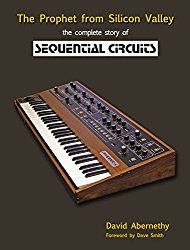
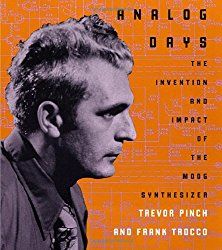
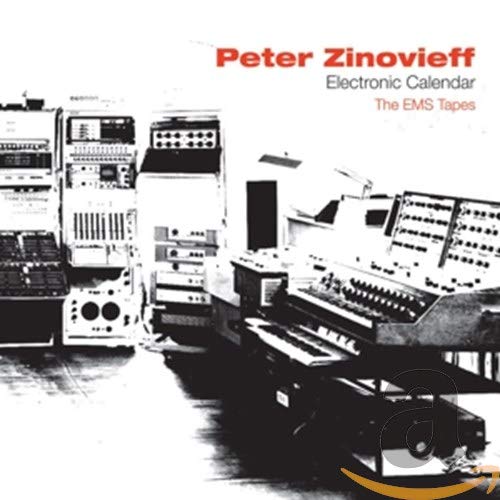
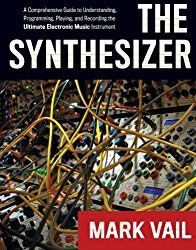

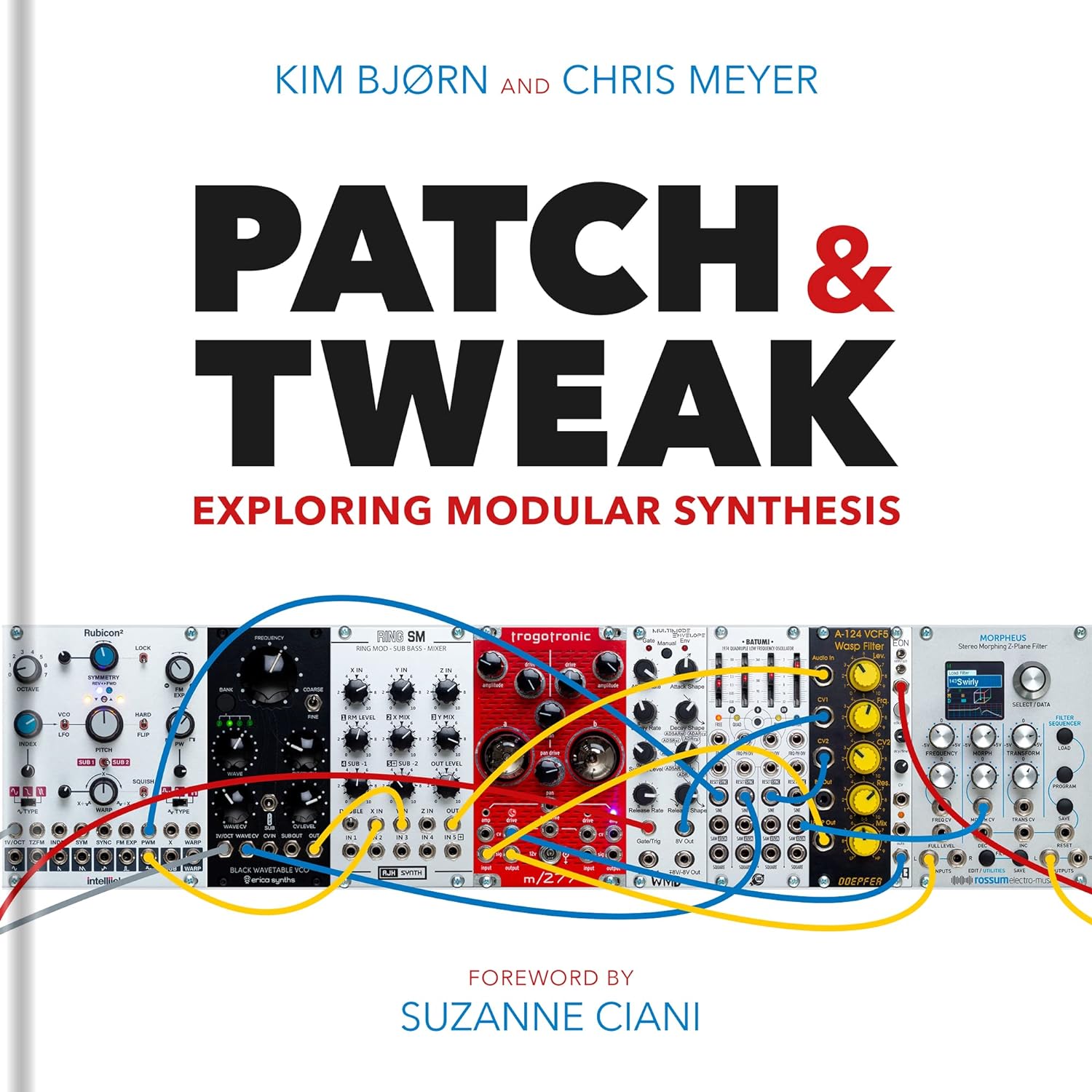
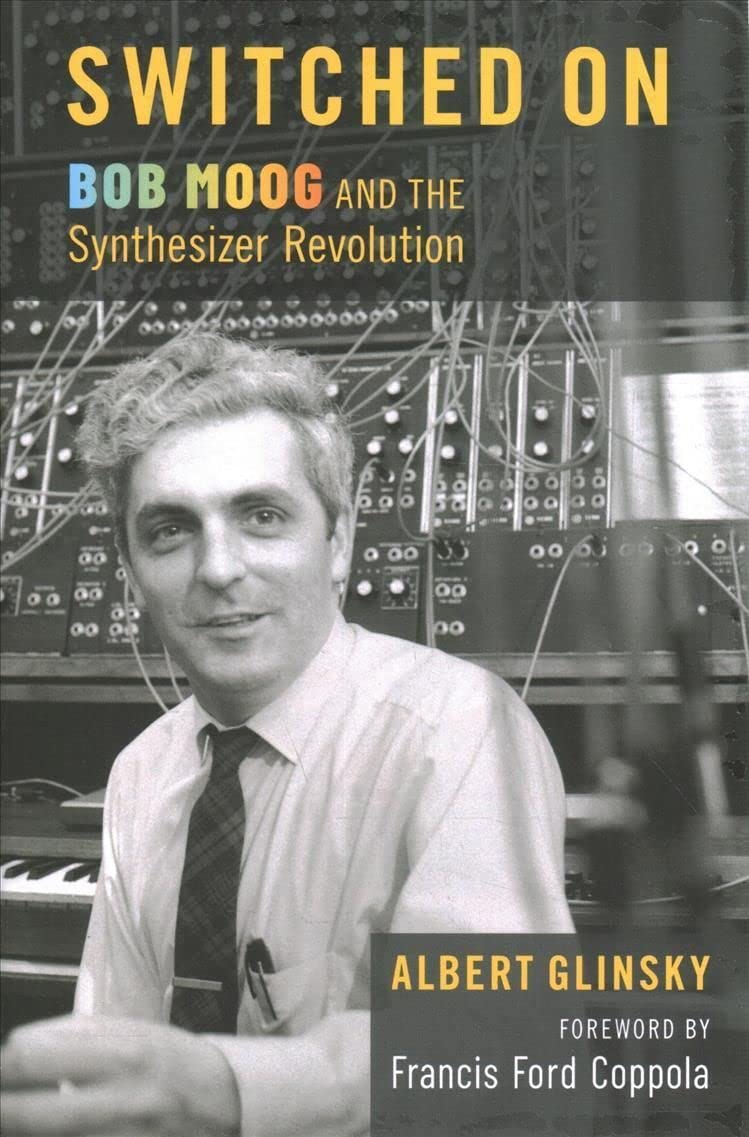
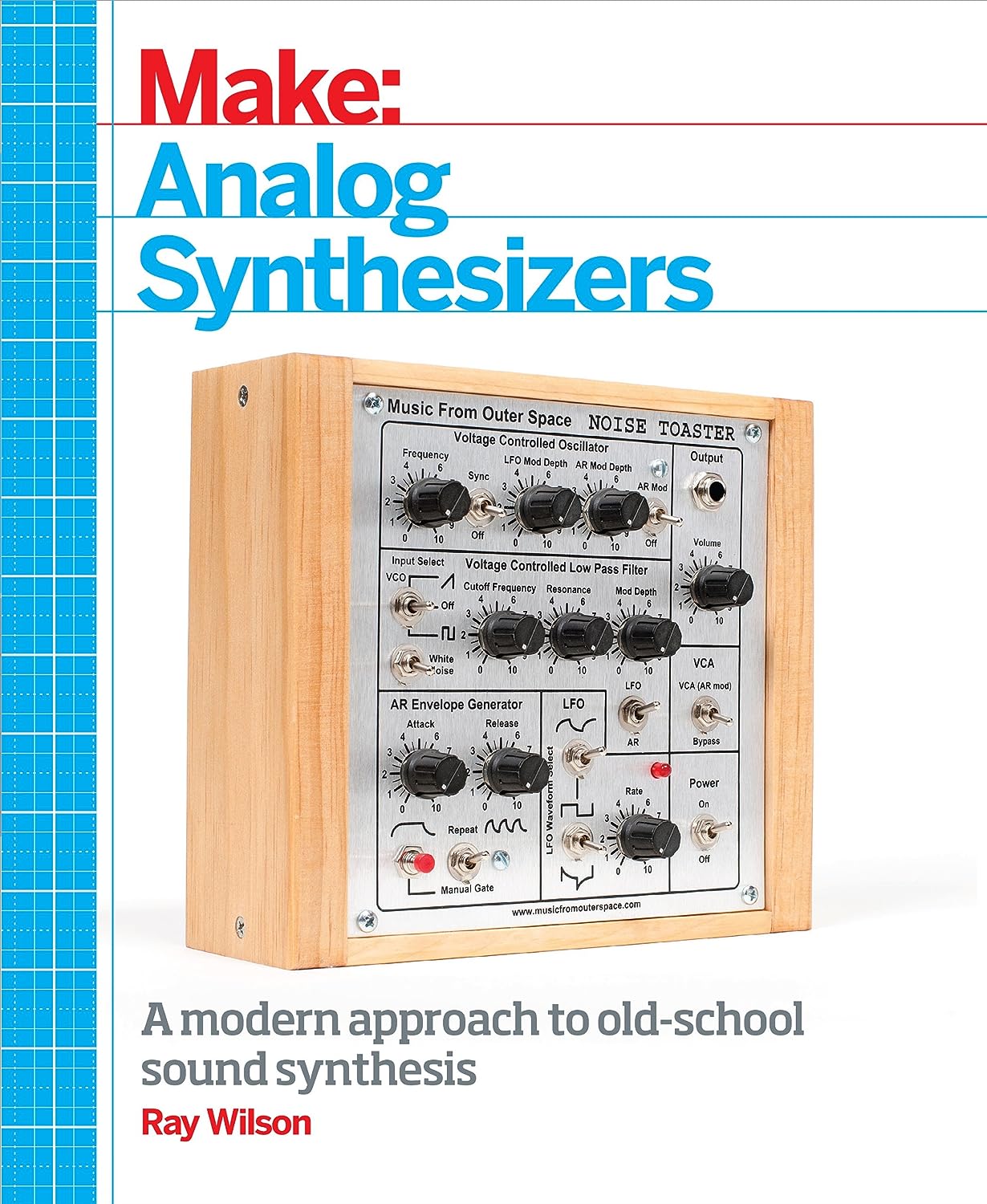
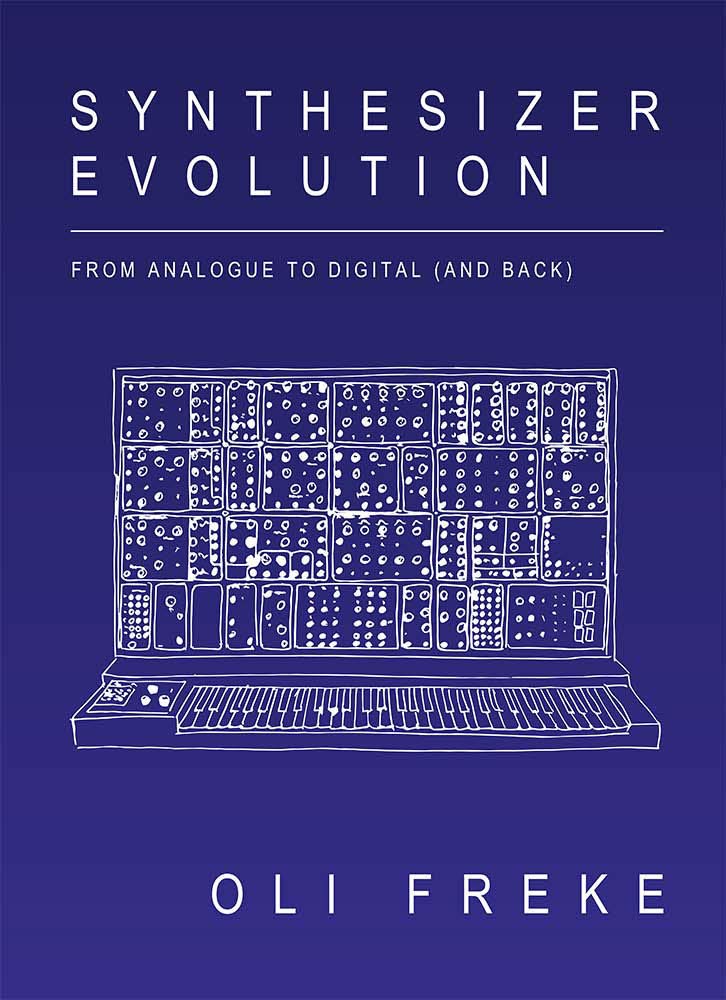

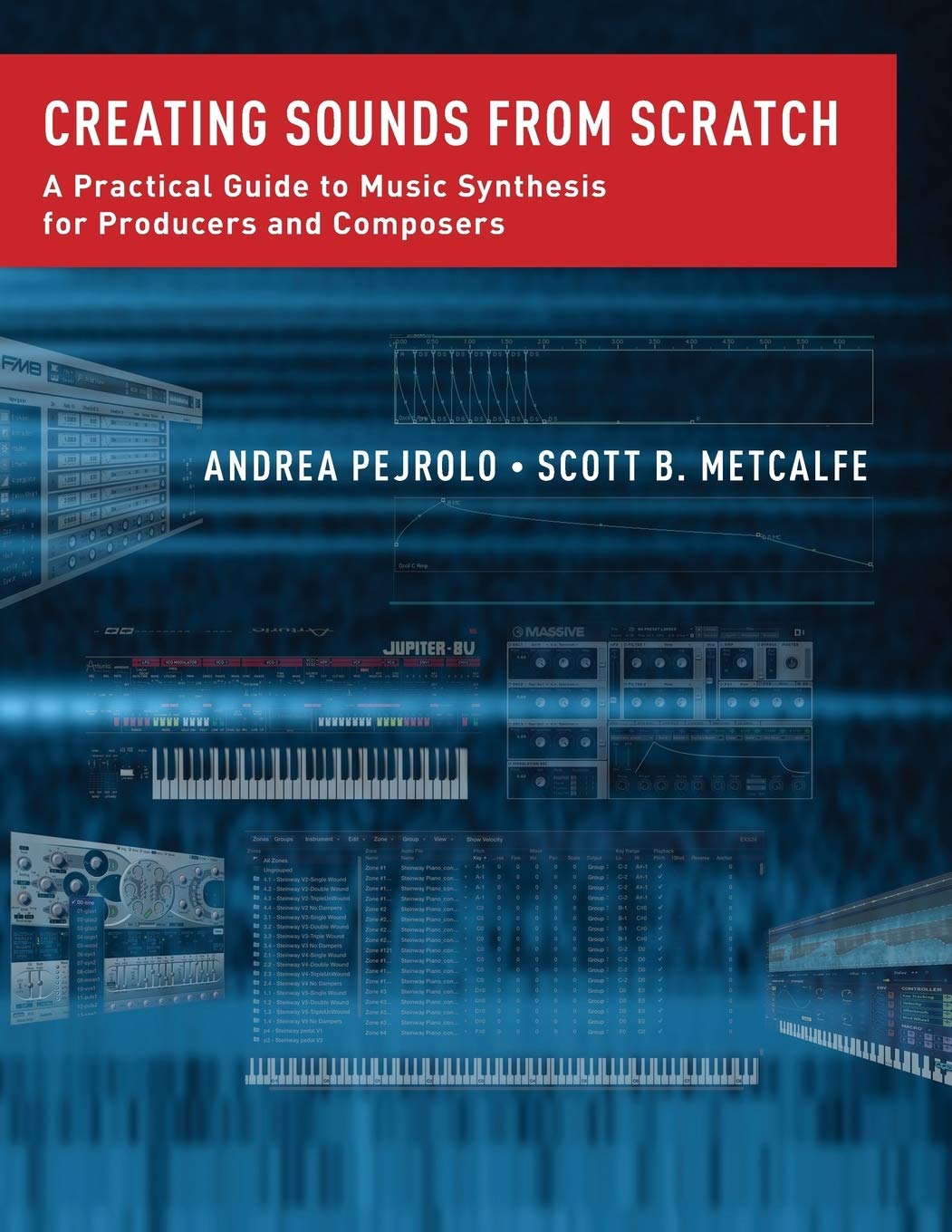


© Matrixsynth - All posts are presented here for informative, historical and educative purposes as applicable within fair use.
MATRIXSYNTH is supported by affiliate links that use cookies to track clickthroughs and sales. See the privacy policy for details.
MATRIXSYNTH - EVERYTHING SYNTH













© Matrixsynth - All posts are presented here for informative, historical and educative purposes as applicable within fair use.
MATRIXSYNTH is supported by affiliate links that use cookies to track clickthroughs and sales. See the privacy policy for details.
MATRIXSYNTH - EVERYTHING SYNTH




















